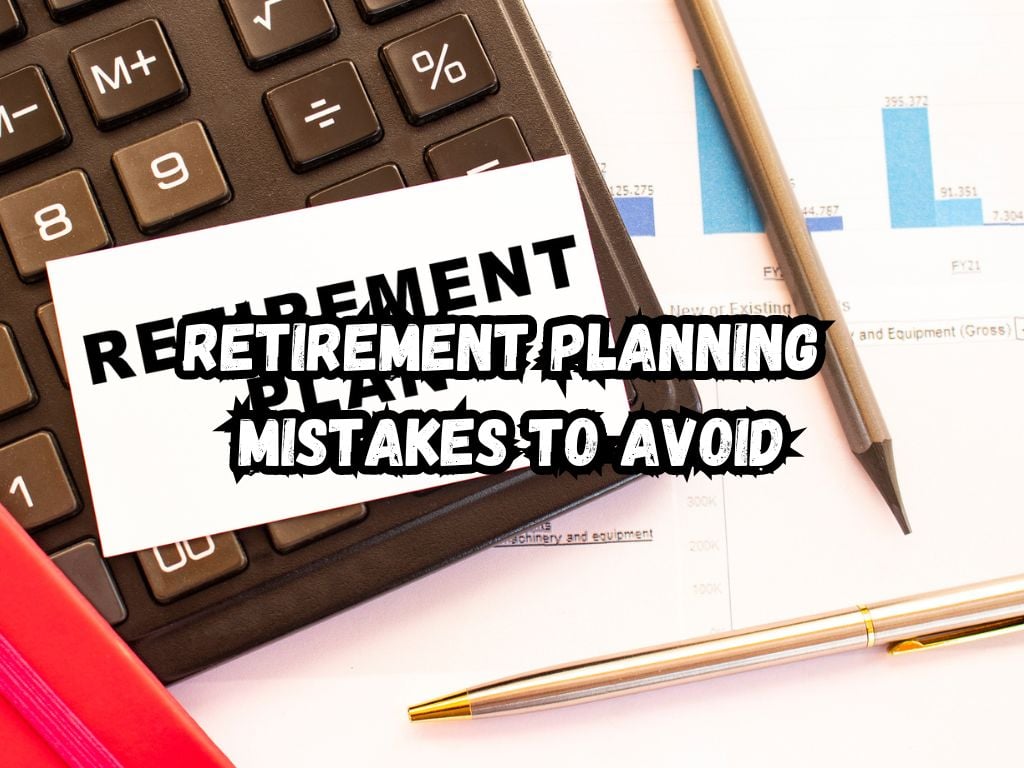Planning for retirement is a step many of us know we should take, but often delay. The process is riddled with complexities and misconceptions.
This article aims to shed light on common retirement planning mistakes and how to sidestep them. Ensuring a secure and comfortable retirement begins with informed decisions today.
Retirement Planning Mistakes to Avoid
Not Starting Early Enough
The Power of Compound Interest
One of the most significant assets in your retirement planning toolkit is time, thanks to the power of compound interest. Compound interest means earning interest on your interest, creating a snowball effect on your savings.
The earlier you start saving, the more your money grows due to this compounding effect. Delaying your savings plan can mean missing out on this growth, requiring you to save much more later on to catch up.
Establishing an automatic savings plan can help you start early and stay consistent.

Underestimating Retirement Needs
Life Expectancy and Healthcare Costs
Many people underestimate how much they will need in retirement, especially with rising healthcare costs and increasing life expectancies. It’s crucial to have a realistic view of what your retirement might look like.
This includes considering unforeseen expenses and the impact of inflation on your purchasing power. Working with a financial advisor can give you a more accurate estimate of your retirement needs, helping you plan more effectively.
Overlooking Tax Implications
Pre-Tax vs. After-Tax Accounts
Taxes can significantly impact your retirement savings and income. Understanding the difference between pre-tax and after-tax retirement accounts is crucial.
Traditional retirement accounts allow you to defer taxes until withdrawal, while Roth accounts are taxed upfront but allow tax-free growth and withdrawals. By diversifying your retirement savings across both account types, you can create a more tax-efficient retirement income strategy.
Neglecting Inflation
The Eroding Power of Money
Inflation can erode the purchasing power of your savings over time, making it critical to factor it into your retirement planning.
Historically, inflation rates have varied, but even a low rate of inflation can significantly impact your retirement savings over several decades.
To protect against inflation, consider including investments such as Treasury Inflation-Protected Securities (TIPS) in your portfolio. These adjust with inflation and can offer some protection against the eroding value of money.
Relying Solely on Social Security
Social Security as a Supplement
Social Security benefits are meant to supplement retirement income, not be the sole source. Relying solely on Social Security can lead to financial strain in retirement, as these benefits are unlikely to cover all your expenses.
Therefore, it’s vital to build additional retirement income streams, such as savings, investments, and pensions, to ensure a comfortable retirement. Diversifying your income sources can provide more security and flexibility in retirement.
Poor Investment Decisions
Risk Management and Diversification
Making poor investment choices can jeopardize your retirement savings. Taking on too much risk or not enough can hinder your portfolio’s growth potential.
Diversification—spreading your investments across various asset classes—can help manage risk and provide a balanced approach to achieving your retirement goals.
Consulting with a financial advisor can help tailor an investment strategy that matches your risk tolerance and retirement timeline.
Failing to Review and Adjust the Plan
The Dynamic Nature of Retirement Planning
Retirement planning is not a one-time task but a continuous process. Your financial situation, life circumstances, and the economic landscape will change over time, necessitating adjustments to your retirement plan.
Regular reviews of your retirement strategy can help you stay on track and make necessary adjustments in response to life and market changes.
An annual or semi-annual check-in with your financial advisor is a good practice to ensure your plan remains aligned with your goals.

Frequently Asked Questions
What is the ideal age to start saving for retirement?
The ideal time to start saving for retirement is as soon as you start earning. The earlier, the better, thanks to the power of compound interest.
How much do I need to save for a comfortable retirement?
The amount varies depending on your lifestyle, expenses, and the age at which you plan to retire. Consulting with a financial advisor can help you calculate a target based on your specific situation.
Can I still retire comfortably if I start saving late?
Starting late means you’ll need to save more aggressively, but retirement comfort is still achievable. Consider speaking with a financial advisor to devise a strategy that works for you.
How do I calculate the impact of inflation on my retirement savings?
Many online calculators can help estimate inflation’s impact on your savings. For a more detailed analysis, consult with a financial advisor.
What are the best types of retirement accounts for tax savings?
The best account types depend on your individual tax situation and retirement goals. A mix of pre-tax (traditional) and after-tax (Roth) accounts can provide tax diversification.
Do I need a financial advisor for retirement planning?
While not everyone needs a financial advisor, consulting one can provide personalized advice and help you avoid common pitfalls in retirement planning.
How often should I review my retirement plan?
Reviewing your retirement plan annually or semi-annually is advisable, especially after major life events or significant financial changes.
What should I do if I have already made some of these retirement planning mistakes?
It’s never too late to adjust your retirement strategy. Consider speaking with a financial advisor to assess your current situation and make necessary changes.
Conclusion
Avoiding the retirement planning mistakes outlined in this article is crucial for securing a financially stable retirement.
Starting early, realistically estimating your retirement needs, understanding tax implications, protecting against inflation, diversifying income sources, making sound investment choices, and regularly reviewing your plan are all key steps in the right path.
By addressing these areas proactively, you can work towards a comfortable and secure retirement.


 Tags:
Tags:










